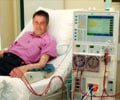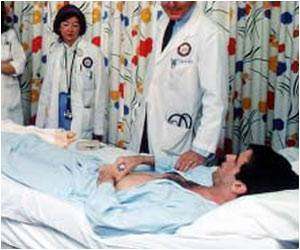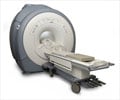
"MRI is developing much faster than CT," said Diego R. Martin, M.D., Ph.D., head of the Department of Radiology at the University of Arizona College of Medicine in Tucson. "The images we're getting are already significantly better than they were a year ago. There is no doubt that in the future we will be able to offer a non-radiation-based alternative to CT for the diagnosis of pulmonary embolism."
MRI has been used for pulmonary embolism detection in pregnant women and patients whose kidneys may be harmed by CT angiography contrast agents. However, the Prospective Investigation of Pulmonary Embolism Diagnosis III (PIOPED III) study, a major multicenter trial, found that centers had difficulty obtaining adequate quality MR pulmonary angiography (MRPA) for suspected pulmonary embolism. The PIOPED researchers determined that MRPA should be considered only at centers that routinely perform it and perform it well, and for patients who have contraindications to standard tests.
In the new study, the research team assessed the impact of two additional MRI sequences on MRPA's accuracy. The two techniques—contrast-enhanced volumetric interpolated breath-hold examination (VIBE) and non-contrast true fast imaging with steady-state precession (true FISP)—complement MRPA, according to Dr. Martin.
The addition of VIBE provides a gray scale that enables readers to distinguish between the clot, or thrombus, and the lung, which both appear dark on MRPA.
"Also, VIBE is not time sensitive," Dr. Martin said. "If the patient coughs, you can do it again. You don't have that option with MRPA."
Advertisement
When Dr. Martin and colleagues studied the three techniques on 22 patients with CTA diagnosis of pulmonary embolism, they found a sensitivity of 55 percent, 67 percent and 73 percent for MRPA, true FISP and VIBE, respectively. Combining all three MRI sequences improved the overall detection rate to 84 percent. Specificity was 100 percent for all detection methods except for MRPA, which demonstrated one false positive.
Advertisement
"PIOPED III did not answer the question of whether or not MRI is a useful alternative to CT, because it didn't use all the tools available," he said.
The MRI sequences used in the study are offered on all the major vendor systems, according to Dr. Martin, with the entire three-sequence protocol taking only 15 minutes to set up and perform.
Source-Eurekalert


![Pulmonary Arterial Hypertension [PAH] - Symptoms & Signs - Causes - Diagnosis - Treatment Pulmonary Arterial Hypertension [PAH] - Symptoms & Signs - Causes - Diagnosis - Treatment](https://www.medindia.net/images/common/patientinfo/120_100/pulmonary-arterial-hypertension-pah.jpg)











